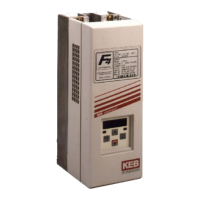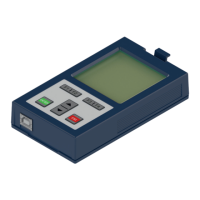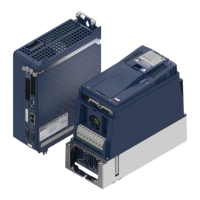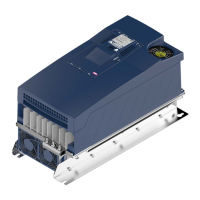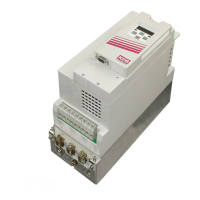If activating the System Inertia and FFTC introduces vibration during the
acceleration or deceleration, it may be necessary to decrease the LC42 Feed
Forward Torque Command Filter by one step (eg. 31 to 16 Hz). For externally
generated speed profiles (serial, analog), this may help filter the steps in the
pattern. Increasing the filter further may introduce unwanted delayed response.
It may be necessary when using FFTC to lower the value of KI and KI Offset
(LC8-9, 11-12) speed gains (by a factor of 5-10).
Another option is to use the LC02 Speed Gain Optimization after the System
Inertia has been learned. The Speed Gain Optimization allows for adjustment of
the speed control gains on a sliding scale (e.g. 0 = Soft, 25 = Hard) which
automatically adjusts the Proportional and Integral Speed Control gains (but not
the Integral Offset).
When changing value of LC41, if LC02 = non-zero, it will trigger recalculation of
the gains.
LC42 Feed Forward Torque Command Filter
This provides a low pass filter to the speed command. When the system inertia has been
entered, this setting will be calibrated according to the control mode.
In control modes where the speed profile is generated by the controller (serial, analog),
decreasing the frequency (increasing sample time) may help reduce any unwanted
affects from discontinuous inflection points in the speed profile generated by the
controller.
LC43 Feed Forward Torque Command Gain
Determines the relative gain of the feed forward torque command. 100% = unity
command. A value of 90% is recommended. Higher values strengthen the response,
lower values weaken the response. When the system inertia has been entered, this
setting will be calibrated.

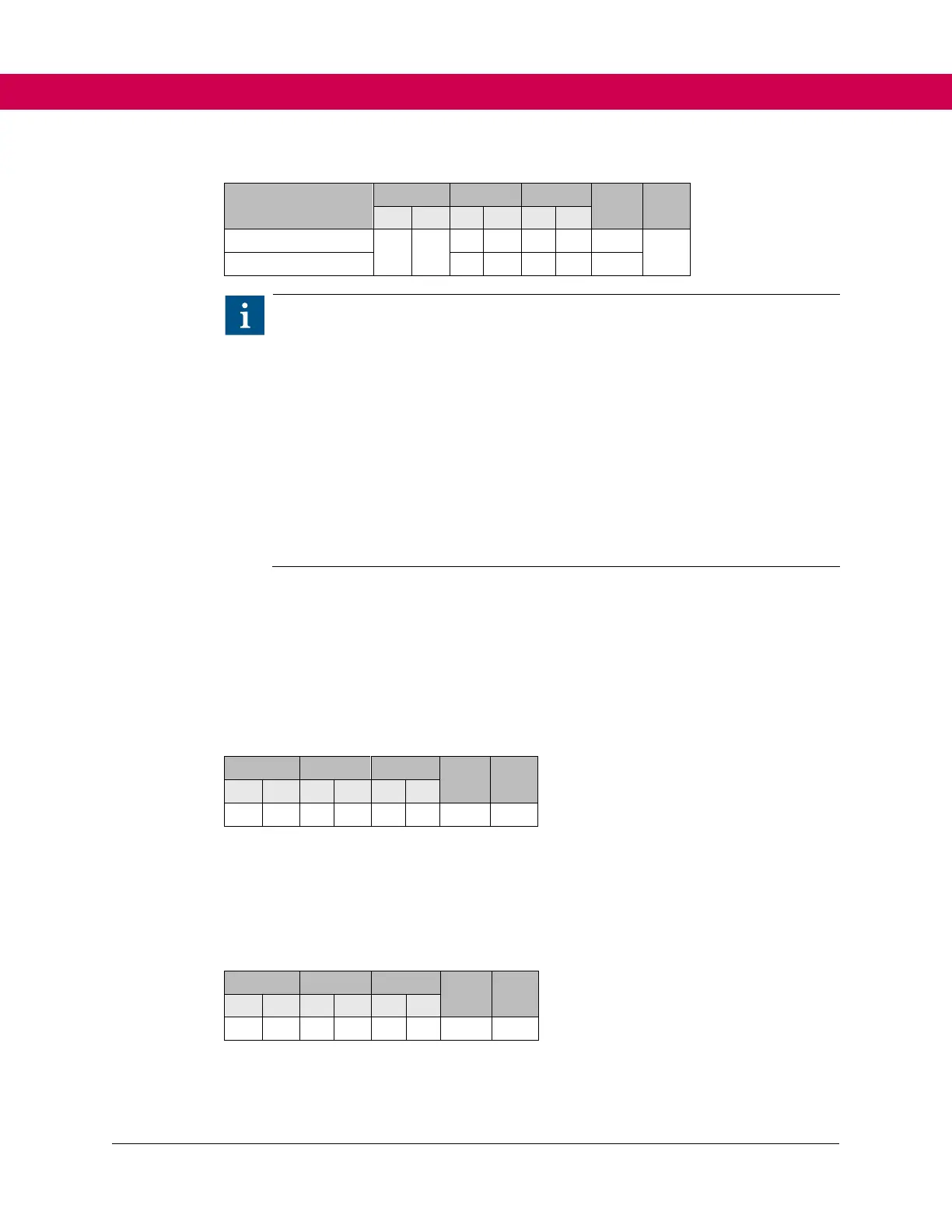